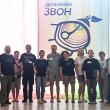Территория заповедника "Денежкин Камень" закрыта для посещения туристами. |
Search |
Land Use HistoryThere was never any large-scale industrial development in the area, and even hunting was limited because the territory was difficult to access. Although hunters have been coming here since the earliest human settlements in the Urals, this was less popular than neighboring land. The rivers, mountainous terrain, harsh climate and shortage of fertile soil also discouraged would-be settlers from this land. The plains on either side of the Ural Mountains, with their full-flowing navigable rivers, were settled earlier and were more densely populated that the mountainous regions. There is a theory that some of the earliest Russian explorers heading over the Urals towards Siberia may have traveled across the northern part of the nature reserve along the Taltiya or the Khal-Sori Rivers. That might explain why Lozvinsky Gorodok, perhaps the first known Russian fortress in Siberia, was situated on the Lozva River at the mouth of the Ivdel River. However, the concensus is that the earliest routes across the Urals most likely ran along the Ivdel River from the east and along the Posmak River in the west - not on the nature reserve’s territory. Today there is only one rugged forest road , running through the territory of the reserve, starting in the west and going through the lowest part of the Urals, between the mountain ranges, and passing through the former ironworks on the Kutim river and the mining settlement of Solva which is in the current reserve. Further on this road forks. One branch leads south along the River Solva and the prospectors’ settlements on its banks. The other curves around Denezhkin Kamen Mountain from the north and leads to the village of Vsevolodo-Blagodatskoe. The Mansi people used to drive reindeer herds along the mountain range over Khoza-Tump and Yelovsky Ural (Uval) across the Solva River and then up the Denezhkin Kamen Mountain or along and over the Main Ural Ridge and further south up to the Kvarkush plateau. In fact, the entire human history of the territory comes down to reindeer herding, hunting and the Solva mine with its settlements and connecting roads. People grew vegetables and kept cattle on the river Solva. There were hay meadows and small pastures. Hay was harvested along the rivers including the Yelovka River and on Yelovsky Ural Mountain beyond the tree line. Some data on human settlements and natural resource management: The Solva settlement probably first appeared in the late 19th century (the 1910 edition of the Dictionary of Verkhotursky region contains records of it). There were around 20 houses, a local district school, a first-aid station and a shop. About 200 people lived here. The settlement specialized in mechanical dredging for platinum (and small quantities of gold). The inhabitants also picked berries and pine nuts for individual use, went hunting and harvested firewood. The mine closed in the 1940s as the Great Patriotic War (World War 2) began. In 1959-61 only few families remained in the settlement. At present this settlement, and all others in the territory, are abandoned. Mekhanichesky and Drazhny settlements accompanied the settlement of Solva. These settlements probably emerged as the dredge moved downstream. The settlement of Supreya was associated with gold-mining. It is not known when it was founded and ceased to exist and how many inhabitants it had, but by 1961 it was already abandoned. Vesioly settlement emerged as a migrant camp in the early 1930s. Gold was extracted here as well. In 1941 the inhabitants were evicted. Sharp was a settlement of about 10 cabins of 16x33ft in size that existed in 1929-1930. Locals used to gather firewood for the Nadezhdinsk plant (in the modern-day town of Serov). According to locals, this settlement literally died out. This territory was first incorporated in the nature reserve from 1946-1961, but after that the reserve was closed and turned into the “Denezhkin Kamen” “gospromhoz” (wildlife management area). This enterprise was engaged in logging and reforestation works, fur and meat trade, fishing, picking of berries, pine nuts and medicinal plants, grazing reindeer herds of 300 to 1000 animals, and hay harvesting. The territory was also a tourist attraction. The wildlife management area Logging on the future territory of the nature reserve was closely tied into the settlements which grew up around the dredging industry. Wood was needed to build and maintain them, and logging also provided employment for earlier exiled settlers in the area. But in the early 1970s, extensive industrial logging began. Trees were felled in the pine forests. Over a period of 20 years from 1971 till 1992 an area of 2,070 acres (84,967 cubic feet in volume) was cut down. Much of the reforestation was left to natural regrowth: in areas where natural regrowth reached 5,000-10,000 trees per 2.47 acres, or those where natural seeding occurred, nature was allowed to take its course. In areas with limited natural regrowth (1,000-3,000 trees per 2.47 acres) there was active reforestation, with new trees planted by hand along the skid trails. As a rule, two-year-old seedling of Scots pine and pine seeds prepared for sowing were used. The sowing process took place in the early years of the re-established reserve, but proved to be unviable as a result of mountain soil infertility as well as meltwater and spring floods destroying the plants. There was a serious fire which damaged large areas of the reserve in 1938, but there is no data on the extent of that blaze. The best clues come from forest management information from 1950, which shows tracts of young forest corresponding to the fires of 1938. There was a further, largely unresearched, outbreak of fire in the late 1970s. During a dry spell in 1988, several hundred fires broke out in Severouralsk and Ivdel districts. A big fire spread over 430 acres of sectors in the eastern part of the preserves territory. In the notoriously hot and dry summer of 2010, as much of Russia was ravaged by forest fire and central Moscow found itself choked by acrid smoke blowing in from neighboring regions, Denezhkin Kamen was also badly affected. In the eastern part of the territory a fire broke out and burned for six weeks as it swept across 8,896 acres. The flames devastated Churok mountain, Zhuravliov Kamen Mountain and territories along the left bank of the River Sharp and the right bank of the River Shegultan downstream from the mouth of the Malaya Kondorka River. That year saw many fires in the areas around the nature reserve: around the Main Ural Ridge and on its western slope; in the southern part of Bely Kamen Mountain; on the Shemur mountain range; in the area of Bobrovskoye bog, near Chashchevo lake and to the south, along the both banks of the Shegultan River. Hunters were mostly looking for sable, marten, kidus (a sable-European marten cross-breed), mink, Siberian weasel, stoat, lynx, wolverine, bear, hare, squirrel, elk, wood grouse, black grouse, hazel grouse and willow grouse. There is no exact data on extent of hunting. Hunting grounds were assigned to foresters, and the season began when the squirrel’s molting finished. In the fall, before snow cover increased dramatically and a snow crust was formed, hunting with dogs was most common. In deep snow animal traps were preferred. Bears were almost always hunted with dogs. Elks were hunted from January or February with dogs, or more commonly by stalk hunting. According to one survey, from 1985 about 10 heads a year were hunted legally and up to 10 heads were poached. Cowberry, whortleberry, honeysuckle, cowberry leaf, bistort rootstock, chaga mushroom, birch branches for brooms, birch saplings for vegetative propagation and pine nuts were harvested on the territory of the enterprise. Unfortunately, data on particular places and volumes of harvesting cannot be found. The wildlife management office registered only the total volume of production; neither place nor time was recorded. The richest harvest of pine nuts – 882 pounds – was gathered in 1987. Moreover, in spring of 1988, another 1,102 pounds was picked from under the snow. Since 1961 a herd of semi-domesticated reindeer of 300 to 1000 heads was grazed. The herd came from the private herd of the Mansi people. The reindeer grazed on the territory of the nature reserve from November to April and were driven in December-February to the former settlement of Solva (sector 439) for headcount and slaughter. The last slaughter took place in February 1993 and later the herd was moved beyond the boundaries of the nature reserve. Today the reindeer migration routes retain the traces of grazing. They are especially visible in tundra areas and on the narrow sledge roads in the forest. Hay was usually harvested by hand or with a motorized mower. Hay was mostly harvested close to the former Solva settlement. After 1983 the hay meadows started to degrade and became overgrown with moss. The yield decreased. For 10 years starting in 1961 small parts of the Yelovsky Ural Mountain, Osinovka river and Mekhanicheskoye areas were used for hay harvesting. None of the hay meadows was bigger than 4.94 acres. There was a tourist route up to Denezhkin Kamen in use in the late 19th century, according to accounts in the Dictionary of Verkhotusky uyezd of 1910. In Soviet times Raisa Rubel, a famous Ural tourist leader and teacher, contributed a lot to the popularity of routes over Denezhkin Kamen. One of the peaks of Denezhkin Kamen was named after her, and the route was given all-USSR tourist route status. It was very popular and several alternative routes grew up around it. The number of tourists was not registered. According to locals, as many as 300 people at a time would gather on the territory (at the popular “Sharp” and “Solva” campsites). A mountain rescue station was based in the former settlement of Solva. It included two houses, a bathhouse and a summer kitchen, permanently staffed with 5-8 people. The station closed down in October 1993. After the nature reserve had been restored, the tourist trails were abandoned and eventually washed out with flood waters almost to the stones (almost the entire soil cover is missing). Root systems are bare. There are numerous campsites which show extensive damage to the environment: soil is footworn, there is no deadwood within half a mile and many damaged trees have ceased to grow after being plundered for firewood. Cans and glass litter the sites. Because of Solva’s popularity as a campsite, there was no deadwood within 1.86 miles. The area was heavily littered and trampled. When the nature reserve was restored, the recreational use of the territory came to an end. Most tourists headed instead to other mountains: Konzhak, Bely Kamen, Kumba, Shudiya, Kazansky Kamen, Kvarkush and the Main Ural Ridge. The vast reduction in recreational use has had a huge impact on the condition and appearance of the land. These days even a single hike or drive on the territory is noticeable, since roads and trails are so overgrown. Even the fire of 2010 seems to be as natural as the dense forest with its toppled trees overgrown with moss and lichen. Firebreaks and fire lines in places where the forest was cleared with bulldozers look much more unnatural. |
LanguagesНовостиВсе новости заповедника |







